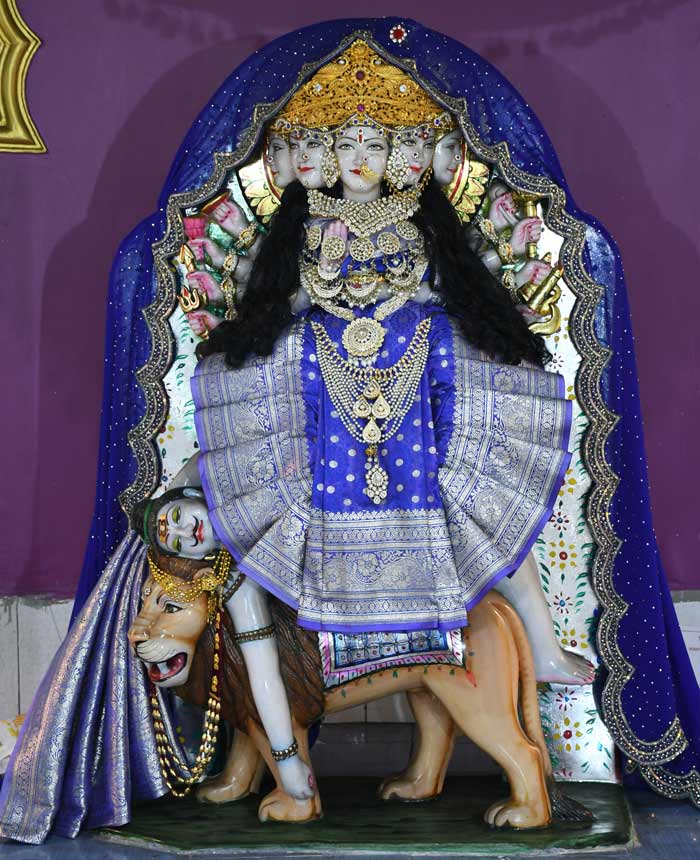
Maa Kamakhya or Kameswari is a Shakta Tantric deity and the Goddess of Desire. Devi Kamakhya is also known as Kameshwari and is considered the source of creation. This aspect of shakti is also considered to be the embodiment of Desire or kaam. She is the one who grants the desire and one who is personification of desire, hence creating.
Literally, we can see it as a worship of feminine procreative abilities, without which no new life can be created. The red colour closely associated with goddess Kamakhya’s worship symbolises menstrual blood which indicates fertility.
Devi is pictured sitting on a lotus emerging from the naval of Lord Shiva who rests on a lion.
Her consort Lord Shiva or Kameshwar is the unmanifested supreme reality. It is said that Kamakhya Devi fulfils all our desires hence we have to be extremely cautious when we ask anything from her.

Devi Kali is a Mahavidya and an extremely powerful and fierce form of Shakti.
Kali is derived from the word Kala which has two meanings , time and darkness. She is a personification of time and space; the ultimate structure of the creation. she represents the force of time carrying both destruction and creation of universe.
She is Mother Nature herself –creative, nurturing and devouring. In Tantric tradition Ma Kali’s dual nature leads practitioners to simultaneously understand the beauty of life and its transient nature.
Her lack of clothes signify reality without any illusion.
Her dark colour signifies the eternal void or space from which all creation emerges and where it all finally is absorbed.
Her necklace of severed heads and girdle of severed arms is seen as a metaphor for severance from the bonds of karma and accumulated deeds. Human hands are also considered the primary instruments of work and so signify the action or karma.
The single severed head mother holds signifies the human ego that must be cut off in order to exit from the cycle of life and rebirth.

Devi Bagalamukhi is one of the dasa Mahavidyas and an extremely powerful form of Shakti. Dasa Mahavidyas are the ten aspects of Shakti.
Her name is the combination of Bagala and Mukhi. Bagala, is distortion of the Valga (वल्गा), which means bridle. Hence she is a Goddess who has the power to control and paralyze the enemies. Due to her powers She is also known as Devi of Stambhana (स्तम्भन).
She is the one who has power over the mind and speech. She is called Shatru buddhi vinashini and Brahmastra Rupini. She is considered a Brahmastra herself. She protects her worshippers fiercely and is extremely revered in the tantric tradition.
There is a spiritual perspective- She is the knowledge that stuns anyone into silence. to be stunned into silence is to stop the continuous chatter of the mind. Worshiping Devi Bagalamukhi helps to defeat one’s internal enemies viz. krodh, lobh, moh, ahankar. Sadhaks get inner strength and wisdom to control negative thoughts and energies.
Mata Bagalamukhi destroys the illusions of her devotees to aid spiritual growth. She gives courage and wisdom to fight adversity and adversaries.
She is also known as Pitambari, the goddess associated with golden colour.
Mata Bagalamukhi has a golden complexion wears golden clothes and sits on a golden throne in the Turmeric ocean (Haridra Sarovar).
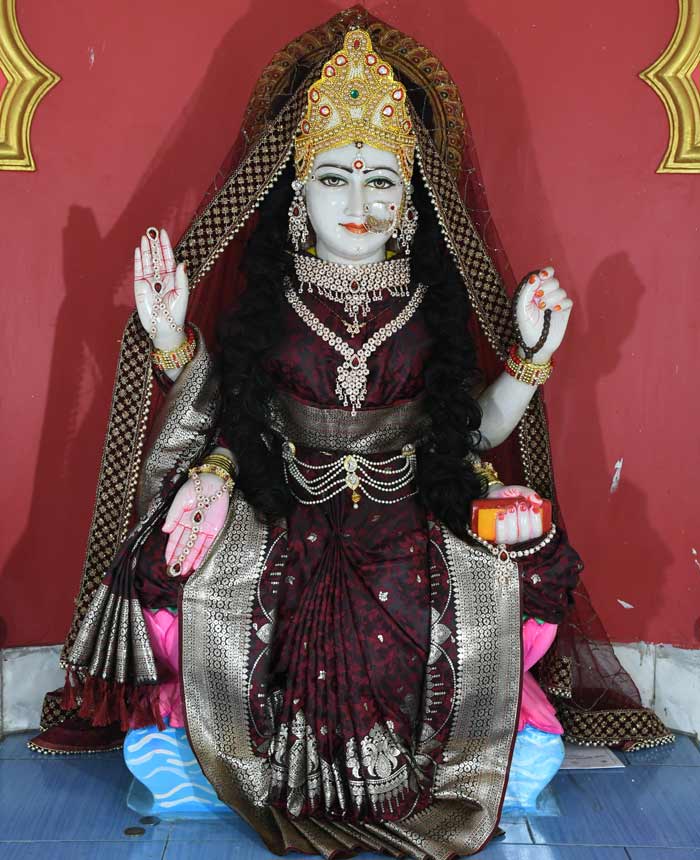
Devi Tripura Sundari is one of the ten Mahavidyas and is also known as Rajarajeshvari, Shodashi Kamakshi and Lalita. She is revered largely in the Shakta tradition and is widely praised in the Lalita Sahasranama and Saundarya Lahari. In Sanskrit, Tripura means three (tri) cities (pura), and Sundari means a beautiful woman. She is often depicted as a beautiful sixteen-year-old girl, symbolizing eternal youth. Her form is said to be the most beautiful in all the three worlds, a beauty that also expresses the spiritual radiance of the supreme consciousness.
Lalita means “She Who Plays”. All creation, manifestation and dissolution is considered to be a play of Devi.
She represents the transformative power of beauty, which can lead the devotee from the ignorance to enlightenment.
Srimata emerged from the fire of knowledge to protect devs and devotees and slay demon Bhandasura who was born from the ashes of Kamadeva. In the Shakta tradition, she is considered the aspect of the Divine Mother, representing beauty, love and the play of the universe.
The Yantra and Mantra of Goddess Tripura Sundari are profound tools, symbolizing deep spiritual and cosmic significance.
The Sri Yantra is her geometric representation and represents the universe and the interplay of masculine and feminine energies.
The practice of Shodashi sadhana is a journey towards both pleasure and moksha, reflecting the dual nature of her blessings. Goddess Shodashi is revered as a fundamental deity in guiding devotees towards Moksha, the ultimate liberation from the cycle of birth and death.
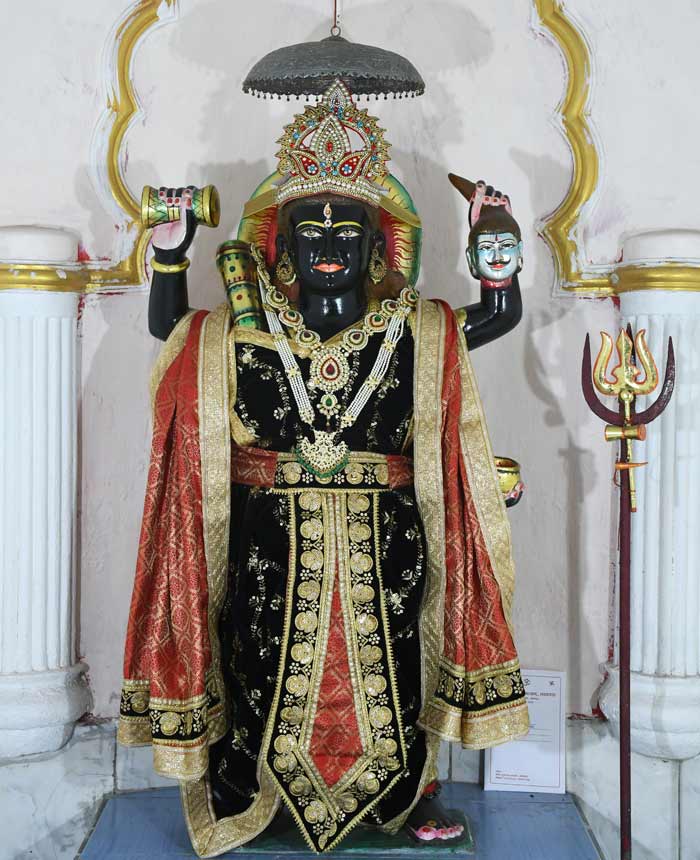
Lord Bhairav or Bhairon is an incarnation (avatar) of Lord Shiva. Lord Bhairav is extensively worshipped by tantriks and is regarded as the protector and temple guardian.

The Shiv parivar is a brilliant example of Hindu tradition. Each member has a different personality, physical appearance and karma, yet all live with mutual love and respect. The Shiv Parivar essentially has four members :Lord Shiva, Maa Parvati and their two sons Kartikeya and Ganesha.
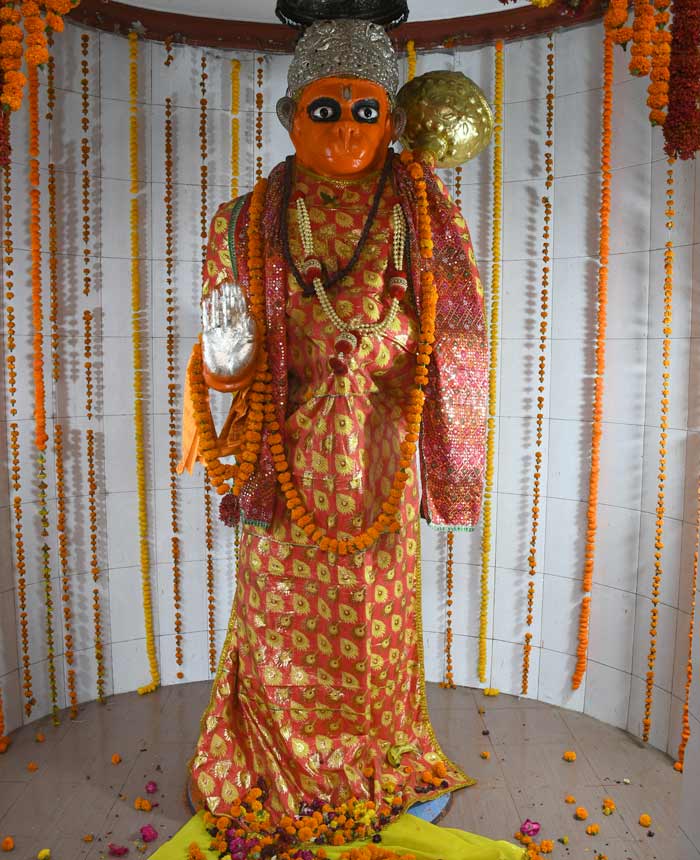
Lord Hanuman or Anjaneya (Sanskrit: आञ्जनेय)is a devotee of Lord Rama, a Chiranjivi, son of the Vayu Dev and an incarnation of Lord Shiva. Hanumanji is the ideal Brahmachari (one who follows the path of Brahma).
It is believed that lord Hanuman was born on Tuesday thus all his devotees specially worship him on this day.
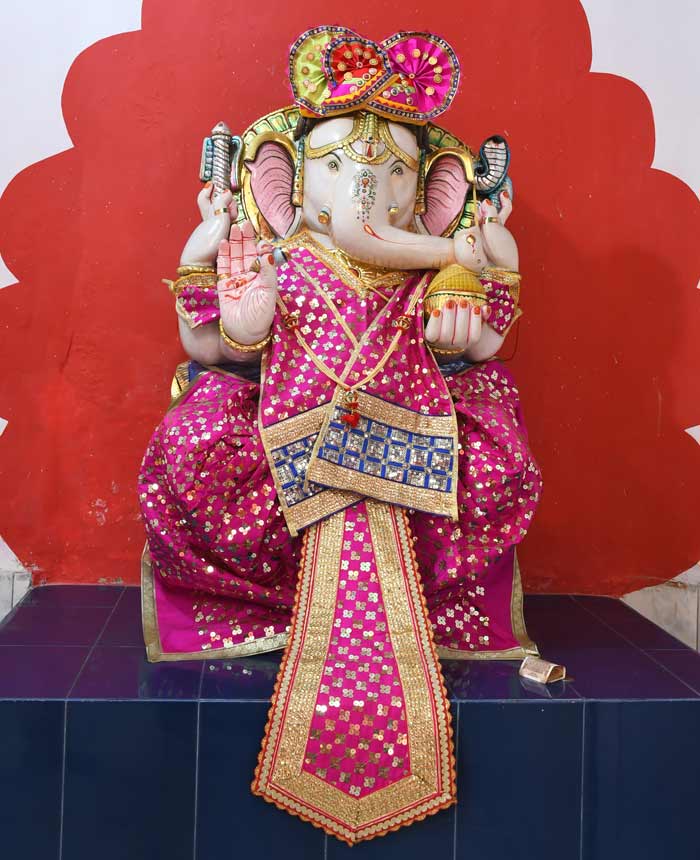
Ganeshaji or Ganapati is one of the most significant gods in Hinduism with an elephant head and a human body.He is the son of Shiva and Parvati and brother of Lord Karthikeya. Lord Ganesha was created by Goddess Parvarti using earth which she moulded into the shape of a boy. The name Ganpati “गणपति” where Gana means “People” and Pati means “Leader” – “Leader of the people.”
Lord Ganesha is embodiment of Buddhi, Siddhi and Riddhi known as wisdom, spirituality and prosperity respectively. Lord Ganesha is the personification of Buddhi and the other two virtues are personified as Goddesses and consorts of Lord Ganesha.
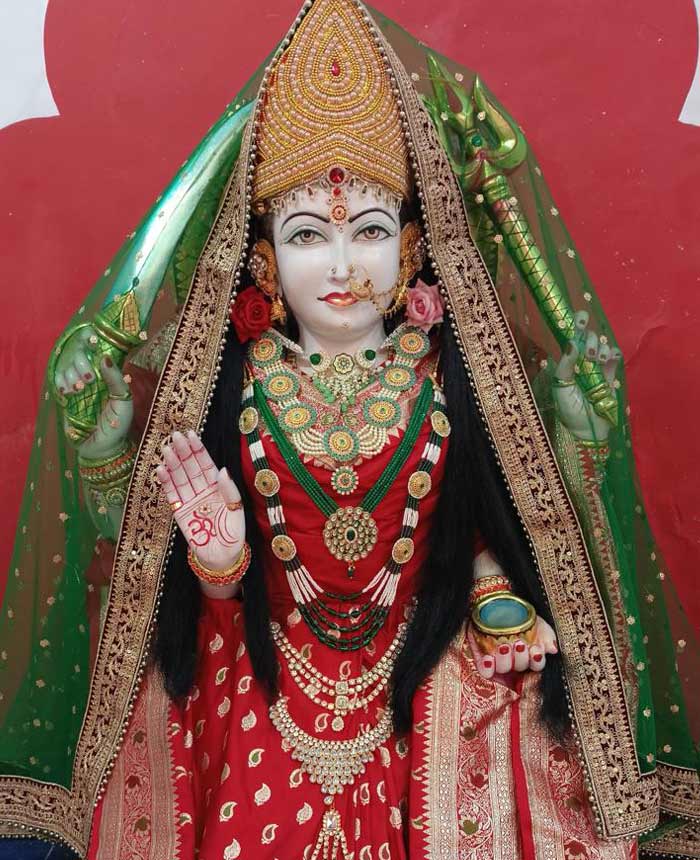
Santoshi Mata is well-regarded as "the Mother of Satisfaction", the meaning of her name. She is the daughter of Lord Ganesh and is worshiped on Friday. She accepts the problems and ill fates of her devotees and blesses them with prosperity and happiness.
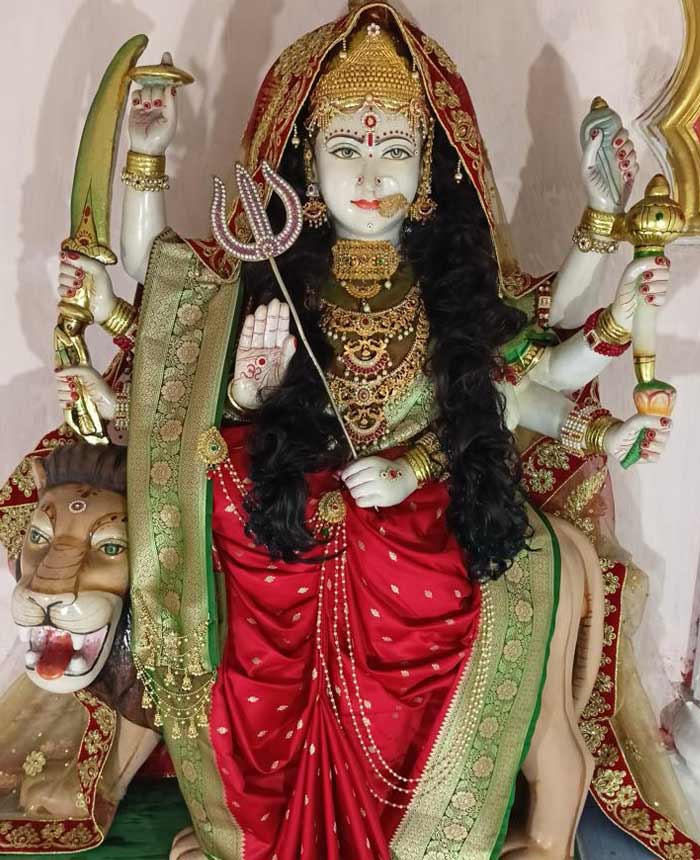
The word Durga (दुर्गा) literally means "invincible" It is related to the word Durg (दुर्ग) which means fort. According to the legend, Devi Durga was created for the slaying of the buffalo demon Mahishasura by the trinity Brahma, Vishnu and Shiva.
Devi Durga is often referred to as Durgatinashini, which literally translates into "the one who eliminates sufferings." She is commonly depicted riding a tiger or lion. This represents power, will and determination. She also possesses three eyes giving her the name triyambake. Which represent Agni, Surya and Chandra.
Her pose is called Abhay Mudra, which means "freedom from fear."
Her Weaponry
The conch shell symbolizes the Pranava or the mystic word Om, which indicates her holding on to God in the form of sound. The bow and arrows represent energy. By holding the bow and arrows both in one hand, Durga demonstrates her control over both aspects of energy—potential and kinetic. The thunderbolt signifies firmness in one's convictions.
The lotus in Durga's hand, not yet fully in bloom, represents the certainty of success but not finality. The lotus in Sanskrit is called Pankaj, which means "born of mud," reminding the faithful to stay true to their spiritual quest amid the worldly.
The Sudarshan-Chakra, which spins around the index finger of the Goddess, signifies that the entire world is subservient to the will of Durga and is at her command. She uses this unfailing weapon to destroy evil and produce an environment conducive to the growth of righteousness.
The sword that Durga holds in one of her hands symbolizes knowledge, which has the sharpness of a sword. Knowledge free from all doubts is symbolized by the shine of the sword.
The trident or Trishul is a symbol of three qualities: Satwa (inactivity), Rajas (activity), and Tamas (nonactivity). Deva uses these to alleviate physical, mental, and spiritual suffering.
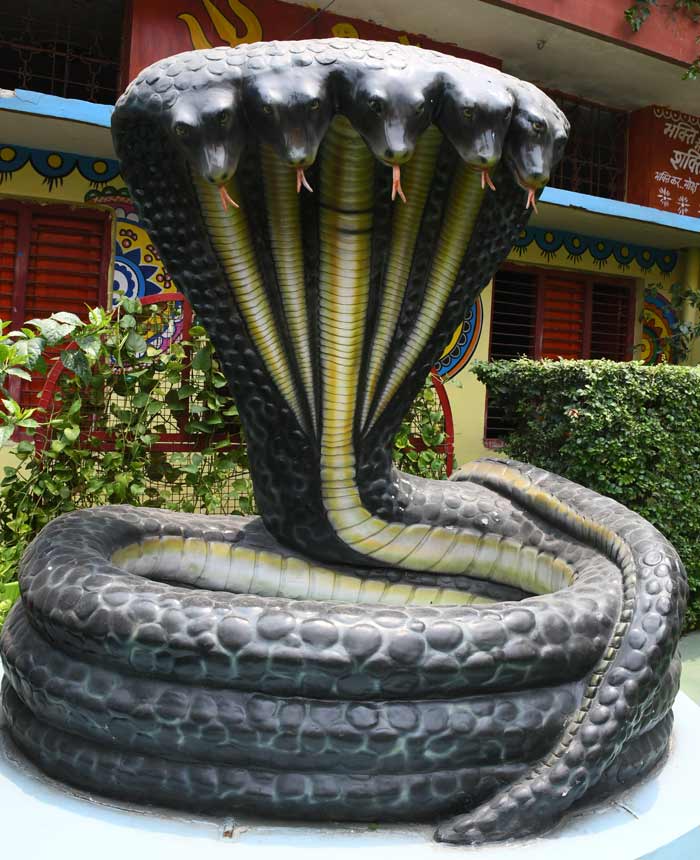
The Sheshnag is often referred to as 'Ananta' or the eternal. This is because the term, 'Shesha' basically means 'the one that remains'. The most prevalent depiction of the Sheshnag is the umbrella covering Lord Vishnu and Devi Lakshmi. According to Hindu mythology, he had descended on Earth in two human forms, Lakshmana (Lord Rama's brother) and Balarama (Lord Krishna's brother). Sheshnag, is the king of all nagas (serpents). He is believed to balance the universe and all the planets on his hood.
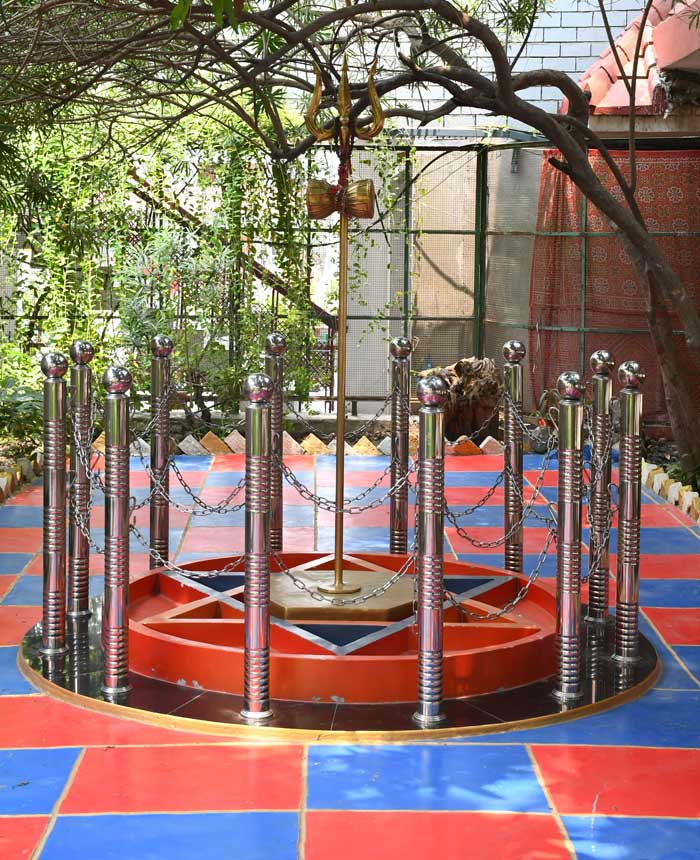
The Shiv Shakti Yantra is a powerful and auspicious Yantra. Shiva and Shakti or Purusha and prakriti represent two fundamental forces that sustain the universe; all that exists is an interplay of these forces. Shiva being the masculine aspect represents focused energy and Shakti being the feminine represents the creative force. A human body, irrespective of the gender, is also an interplay of these energies.
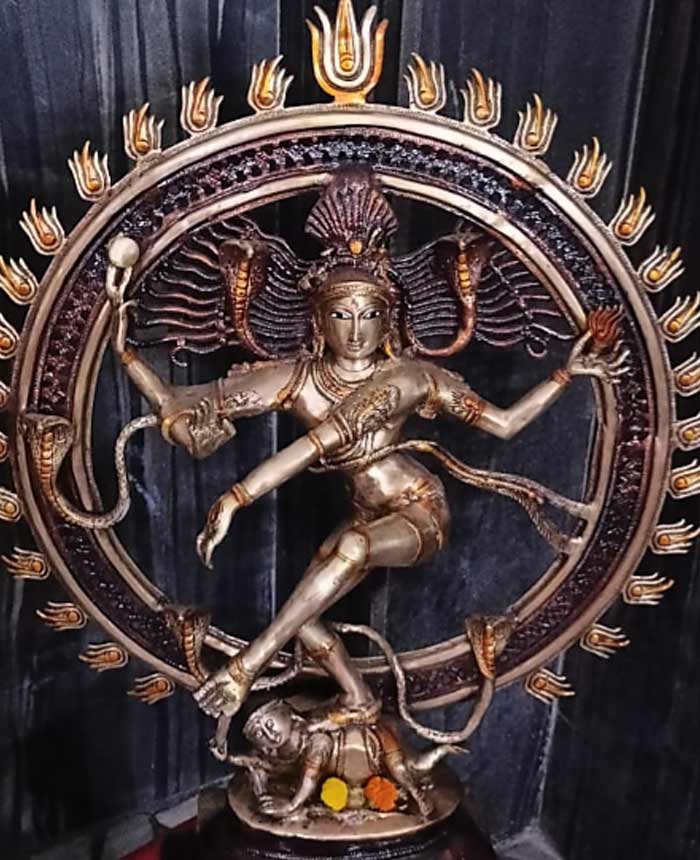
The depiction of Nataraj, the Lord of Dance, holds profound significance and encapsulates powerful symbolism and deep spiritual truths. Natraj is a form of Lord Shiv.
The dance of Natraj symbolizes the cosmic rhythm reflecting the cyclical nature of existence and the cosmic order. The cosmic dance is the dance of life itself, including creation, preservation, destruction of the entire universe.
When Natraj dances with joy it is Ananda Tandava. Performed in a violent mood, the dance is called Rudra Tandava.
Nataraj is depicted with four arms, each carrying objects representing different aspects.
The upper right-hand holds the Damaru, symbolizing the sound of creation, while the upper left-hand holds a flame representing destruction. The lower right hand is raised in the Abhaya Mudra, signifying fearlessness and protection, while the lower left-hand points downward, symbolizing liberation from worldly attachments.
Beneath Nataraj's feet lies Apasmara, a demon representing ignorance and illusion. By overpowering Apasmara, Nataraj signifies the triumph of knowledge over ignorance, illuminating the path to liberation from the cycle of birth and death.
Surrounding Nataraj is a circular aura or Prabha Mandala, representing the cyclical nature of time and the eternal dance of creation unfolding within the universe. Within it is the encapsulated cosmos of mass, time and space, whose endless cycle of annihilation and regeneration moves in tune to the beat of Shiv’s damaru and the rhythm of his steps.
Adorning Nataraj's waist is a serpent, representing the kundalini energy coiled at the base of the spine. As Nataraj dances, the serpent symbolizes the awakening of spiritual consciousness.
A crescent moon adorns Nataraj's matted hair, symbolising the waxing and waning phases of the lunar cycle. The crescent moon also represents the divine feminine energy, complementing Nataraj's masculine form in a harmonious union of opposites.
Throughout this entire process of chaos and renewal, the face of lord Shiv remains tranquil.